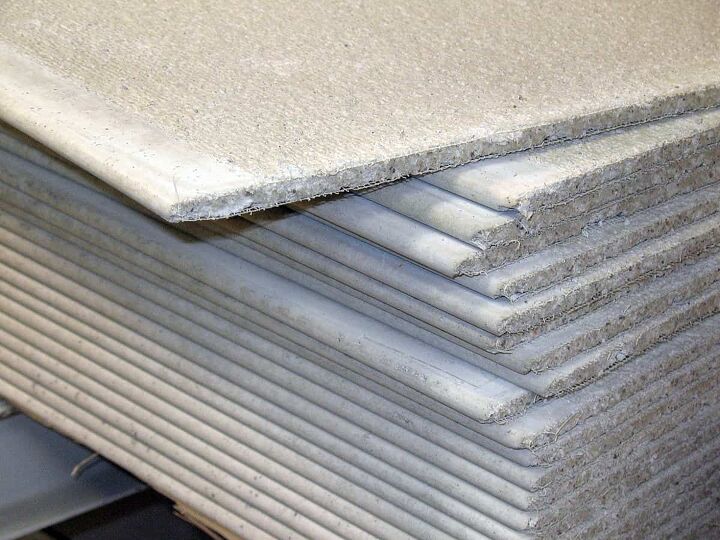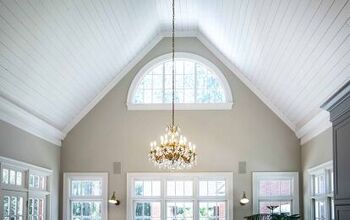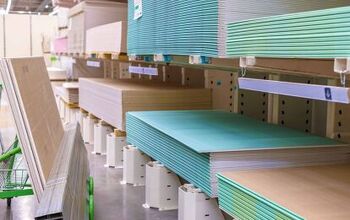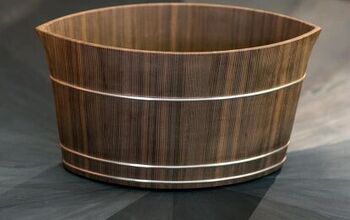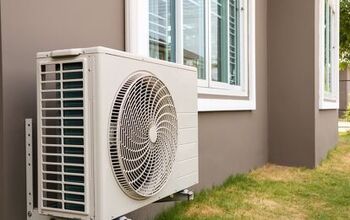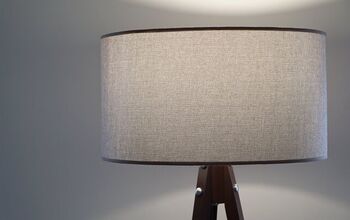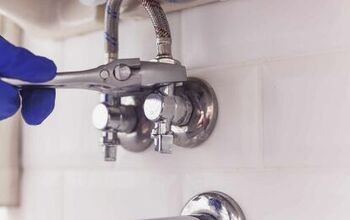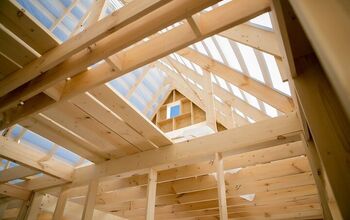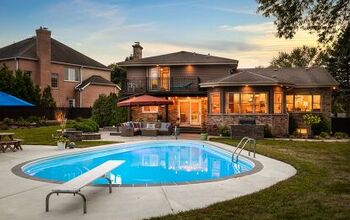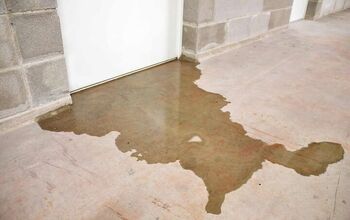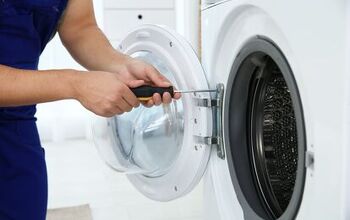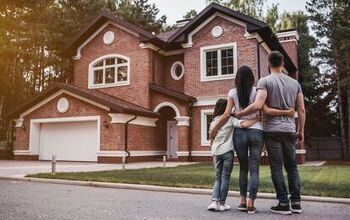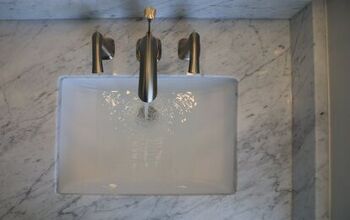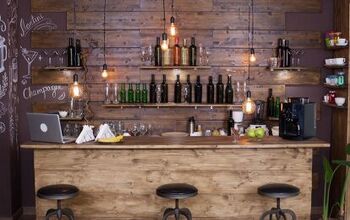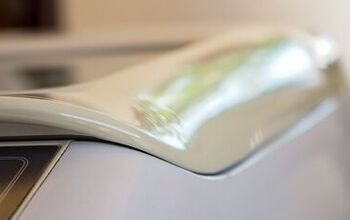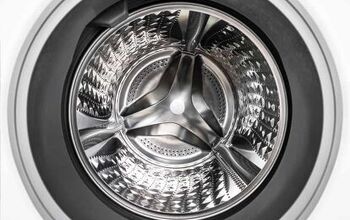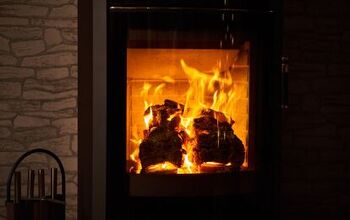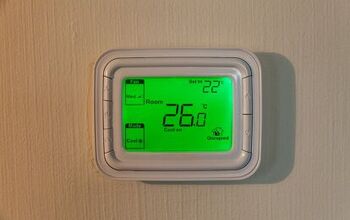7 Types of Ceiling Boards (with Photos)

Ceilings are among the most important components of a home. While they sometimes serve an aesthetic purpose, they are also commonly used for concealing cables and wires, hiding the structure of the roof from the interior, installing lights, and controlling temperatures. With so many technological advancements nowadays and types of ceiling boards to choose from, simple ceilings are becoming less and less common.
Although ceilings can have a major impact on a room’s atmosphere, they rarely come up when describing a space. The material used for a ceiling or the ceiling board should be suitable for the room’s purpose. Some popular options include gypsum, wood, metal, tile, and glass. We’ve outlined all the characteristics of the different ceiling boards, so you can find the best choice to beautify and fit the purpose of your space.
7 Types of Ceiling Boards
1. Gypsum Ceilings
Gypsum ceilings may be constructed out of gypsum boards, sheets, or possibly ceiling tiles. This material comes in large sizes and is incredibly versatile, durable, and economical. They are also lightweight and easy to install without exposing the seams. Gypsum boards are constructed of compressed gypsum powered, covered in paper. As such, they are not resistant to water and moisture, which makes them unsuitable for exterior applications.
Instead, gypsum is most appropriate for interior applications, like in a bedroom or living room. It is also the most preferred material for drop ceilings, as the material is soundproof and fire-resistant. Oftentimes, you’ll see gypsum being used in square planks with metal frame supports. Gypsum board ceilings can then be finished with wallpaper, laminates, and paints.
Gypsum is also more commonly referred to as drywall. Drywall ceilings are typically connected to the ceiling joists and the joints are taped and mudded in order to conceal them. If left smooth, drywall ceilings can be a major source of echoes. Because of this, these types of ceilings are often textured to help deaden sound and also cover any surface imperfections leftover from installation. Common textures include splatter, popcorn, and orange peel.
Pros of gypsum ceiling boards- Highly versatile – available in a number of designs and shapes.
- If reinforced with glass fiber, gypsum can be great at insulating against heat.
- Yields a fireproof ceiling. When exposed to flames, it will produce water which changes to steam to combat the fire.
- Not suitable for moist conditions.
- Can be difficult to mold into various forms.
- Challenging to recycle, causing it to end up in landfills.
Video: How To Make A Floating Ceiling In Gypsum Board With LED Lights
2. Wood or Plywood Ceilings
Wooden ceiling boards typically offer a very classic and natural look for interiors. These boards can be used for both interior and exterior applications. However, wood is not resistant to termites, rot, or the elements, which can lead to warping, swelling, and bending.
To prevent wooden boards from swelling or bending, they should be installed with gaps between them. This will allow space for the wood to naturally expand and contract. This technique is especially important for exterior applications that are going to be regularly exposed to rain and sun.
Regardless, one of the best ways to achieve a rustic look in your home is to use wooden ceiling boards or wood beams. These can be arranged to create modern, appealing patterns on your ceiling. They will add a dramatic focal piece to any space, whether you use a series of wood beams or you cover the ceiling in tongue-and-groove planks. Oftentimes, plaster or gypsum ceilings are accented by using decorative wood beams. Or, structural wood beams can be left exposed to achieve a unique look.
Pros of wood ceiling boards- Durable and visually appealing.
- Can be finished in a number of ways or painted to achieve the desired look.
- Treating the wood will extend its life.
- Challenging to maintain due to its susceptibility to termite infestations.
- Prone to warping, rotting, and other physical changes over time.
- Can be expensive, making it unsuitable for commercial applications.
- Thermal control is required to reduce humidity levels.
3. PVC or Vinyl Ceilings
PVC, or polyvinyl chloride, as a ceiling material of choice, is one of the greatest options out there. It is moisture-resistant, lightweight, and prevents any water from being soaked into the ceiling. Unlike wood, vinyl ceiling boards won’t swell or bend easily, are resistant to termites, and you don’t have to paint them prior to install.
In most cases, PVC and vinyl ceiling panels are simple to install and virtually maintenance-free. They are easy to clean, offering a bright and hygienic ceiling surface. Since these boards are non-absorbent, you can fit in access hatches, flush-fitting, air vents, sprinklers, and lighting effortlessly. PVC ceiling boards come in a range of colors, which makes it easy to find something that will blend well with your interior design.
Although PVC ceiling boards can be used both indoors and outdoors, they can be rather expensive. As such, they are not ideal for major projects or those on a limited budget.
Pros of PVC ceilings- Lightweight and easy to install.
- Resistant to moisture, water damage, swelling, warping, and termites.
- Little to no maintenance required.
- Available in a wide array of colors, styles, and designs.
- Durable and sturdy, with a relatively long lifespan.
- Less visually appealing than other ceiling board options.
- Expensive.
4. Fibre Cement Ceilings
Fibre cement ceiling boards encompass a combination of cement and reinforcing fibers, which form sheets that are roughly four feet by eight feet or three feet by five feet. They are most commonly used as a backing board for tile and can be nailed or screwed to wood or steel studs. Fibre cement boards may also be seen attached horizontally to plywood for kitchen counters, tile floors, and backsplashes.
When used as a ceiling board, fibre cement is fire resistant and incredibly durable against all weather conditions. These boards won’t bend, rot, or swell and can, therefore, be used for both interior and exterior applications. When compared to standard gypsum ceiling boards, fibre cement boards add strength and impact resistance to ceiling surfaces. Cement board is also made in thin sheets with polymer modified cements, which can be bent for curved applications.
Pros of fibre cement ceilings- Resistant to fire and the elements.
- Suitable for interior and exterior purposes.
- Stronger and more durable than gypsum.
- Ideal for moist environments, as it will not mold, mildew, or break down in the presence of leaks and moisture.
- Not a recyclable material.
- Can be difficult to install.
- Installation is often costly and has higher labor costs.
5. Plaster of Paris Ceilings (POP)
When constructing a false ceiling, the two main choices for fabrication are gypsum boards and POP (plaster of paris). While gypsum board is factory-made from gypsum, water, and a few additives, all sandwiched between paper. Plaster of paris, on the other hand, is formed when gypsum is semi-dehydrated by heating. It is a quick-setting fine white powder with many uses, including the construction of false, or drop, ceilings.
POP comes in a powder, is mixed on-site with water, and then applied to a chicken mesh to provide mechanical strength. It is then attached to a metal frame. In its hydrated state, plaster of paris can be formed into any shape. As the material dries, it hardens and retains the desired shape. As such, POP is very durable, has a long lifespan, and is excellent at insulating thermal heat.
Pros of plaster of paris (POP) ceiling boards- Incredibly durable material.
- Doesn’t show cracks and joints easily.
- More flexibility in terms of designs and shapes.
- Combines with water to form a mixture that is easy to spread and level.
- Cheaper than gypsum board.
- Messy and lengthy installation process.
- A lot of material is wasted during the application process.
- Requires adequate drying time to be effective.
- Can crack and shrink if not mixed or installed correctly.
- POP ceilings cannot be installed when the surface is moist.
6. Metal Ceilings
Metal is universally loved for being both durable and shiny. It is a great ceiling board choice for enhancing the beauty of your home’s interior. When used for ceiling applications, metal can be found in tiles, planks, and panels. The most popular types of metal ceiling boards are those made from aluminum and galvanized iron. Metal panels come in a range of sizes and thicknesses to suit your needs.
Using metal on your ceiling can lend a very contemporary, industrial feel to your living spaces. Installing metal ceiling boards is relatively simple and isn’t as time-consuming as some other alternatives. The panels can also be removed and reattached, which makes all the concealed components of the ceiling easily accessible. Because of this, metal ceilings come with the benefit of low maintenance, repair, and construction costs.
Pros of metal ceiling boards- Fire resistant.
- Ideal for workplaces, creating a sparkling atmosphere.
- Easy to maintain, little to no maintenance required.
- Offers easy access to ceiling components.
- Retains original shape and will not crack or warp over time.
- Metal is a costly material, especially when needed for large scale projects.
7. Glass Ceilings
While an unconventional choice, glass ceilings work in interior spaces where more sunlight is desired. Using glass in the construction of your ceiling can transform your home like no other material can. Fortunately, improvements in glazing technology have produced glass panes that are larger, stronger, and more environmentally friendly. That way, whole sections of your ceiling can be replaced with glass panels.
Glass is a wonderful heat insulator and can add a ton of visual appeal to false ceilings. While the material offers little in terms of privacy, this can be remedied by opting for opaque and non-brittle panes. As an added bonus, glass can make your living spaces appear larger than they are by bringing the outdoors in.
Pros of glass ceiling panels- Excellent views without obstruction.
- Offers versatility – with many patterns, colors, and lamination options.
- Serves as a major focal point.
- Lacks privacy.
- Reduces the conventional height of a ceiling. As such, glass should not be installed without the appropriate ceiling height.
Related Questions
Is gypsum board ceilings or POP ceilings better?
In terms of strength, gypsum boards are better than plaster of paris. It is also easy to install, offers a seamless look, and relatively affordable. Plaster of Paris, on the other hand, is a popular choice for those who want to achieve a specific design. Regardless, gypsum tends to be the material of choice because the cost has very little impact on the consumer. Most homeowners opt for gypsum boards because they are time-saving and it can pair well with a variety of other materials.
What is a false ceiling?
Also called suspended ceilings or dropped ceilings, false ceilings hang below the main ceiling. They are usually suspended with metal or wood frames, yielding a lower ceiling while concealing all the components of the original ceiling from view. In fact, the main purpose of a false ceiling is for concealing wires, fire safety, energy efficiency, soundproofing, and helping with moisture and sag resistance.Traditionally, false ceilings were made solely from gypsum boards but nowadays it’s very common for these ceilings to be both functional and decorative.
Is gypsum bad for your health?
If handled inappropriately, gypsum can cause irritation to the upper respiratory system, eyes, skin, and mucous membranes. Dusty construction sites can result in breathing problems, throat irritation, and coughing spasms. Whereas, long-term exposure to gypsum dust increases the risk for more serious health concerns.
What is a popcorn ceiling?
Also called acoustic ceiling, stucco ceiling, or stipple ceiling, popcorn ceiling is created by using one of a variety of paint-on or spray-on techniques. Tiny particles of polystyrene or vermiculite are used to create a bumpy surface on the ceiling, which gives it sound-deadening characteristics.In many areas of the world, popcorn ceilings were once the standard for bedrooms and residential hallway ceilings. This was largely due to its acoustical properties, ability to conceal surface imperfections, and bright, white appearance.
Related Guides

Jessica considers herself a home improvement and design enthusiast. She grew up surrounded by constant home improvement projects and owes most of what she knows to helping her dad renovate her childhood home. Being a Los Angeles resident, Jessica spends a lot of her time looking for her next DIY project and sharing her love for home design.
More by Jessica Stone



